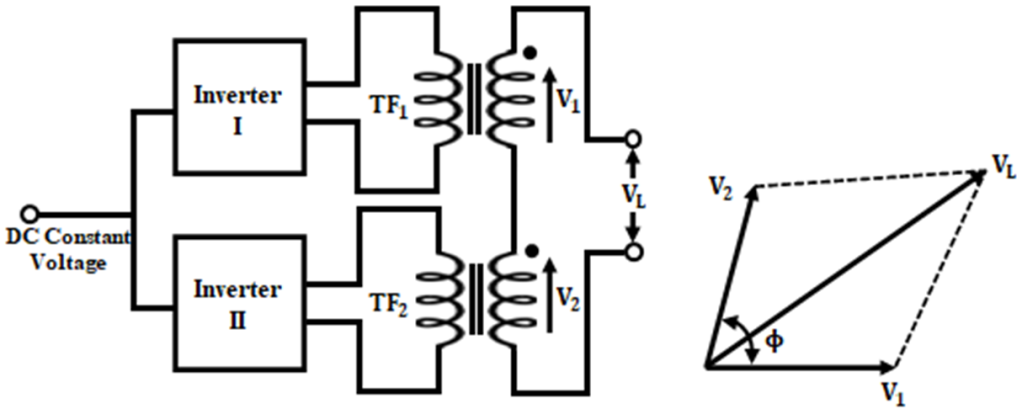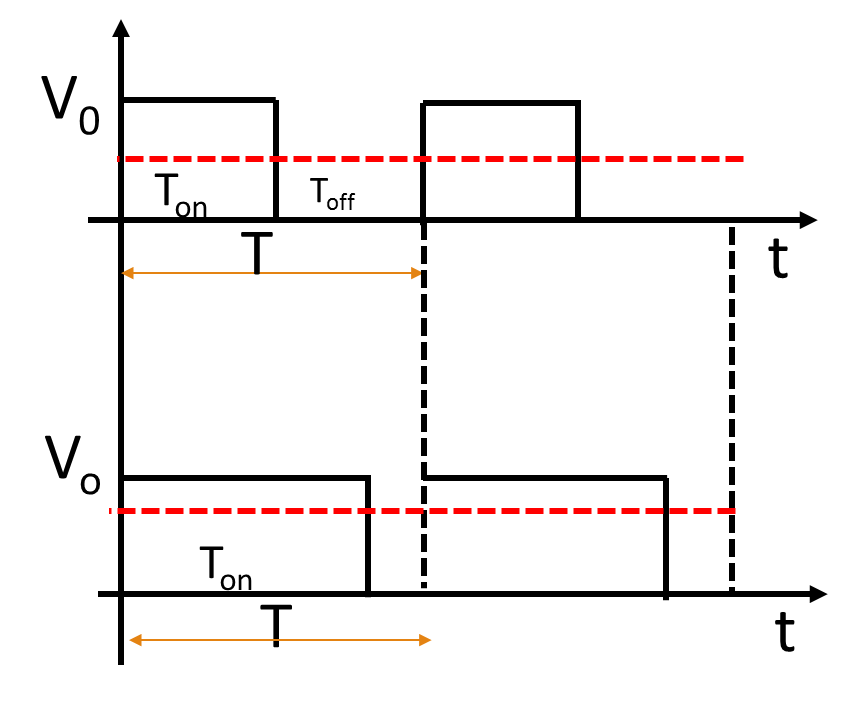In many applications it is necessary to control the output voltage of inverters. Various methods for the control of output voltage are
1. External control of ac output voltage
2. External control of dc output voltage
3. Internal control of inverter
1. External control of ac output voltage
In external control of ac voltage, the output voltage of the inverter is controlled by using external components at the ac output side.
The inverter is connected to ac voltage controller. The load voltage is regulated by the ac voltage controller.
Higher harmonic content in the output voltage.
Rarely used except for low power applications.

Inverter output is fed to two transformers whose secondaries are connected in series to obtain an adjustable output voltage. Phasor sum of two fundamental voltages V1 and V2 gives the resultant fundamental voltage Vo.
The frequency of output voltages V1 and V2 should be same.
When Ѳ =0, Vo = V1 + V2
When Ѳ =π, Vo = 0 if V1 =V2

2. External control of dc output voltage
In external control of dc voltage, the input dc voltage to the inverter is controlled by external circuits like controlled rectifier, uncontrolled rectifier and chopper, ac voltage controller with a diode rectifier or a dc chopper in case dc voltage is available.


Any of the above methods can be used to control the output voltage of inverter.
Features :
- Output voltage and its harmonic content are not affected appreciably
- More power conversion stages leads to losses.
- Reduced efficiency
- Filter is required to remove the ripple in dc voltage
- Filter circuit increases the cost, weight and size.
- Sluggish response
3. Internal control of inverter
Pulse Width Modulation
The output voltage can be controlled by varying the pulse width.

The output voltage control can be obtained without any additional components
- Lower order harmonics can be eliminated
- As higher order harmonics can be filtered easily filtering requirements are minimized.
Commonly-used PWM techniques are
- Single-Pulse-Width-Modulation
- Multiple-Pulse-Width-Modulation
- Sinusoidal-Pulse-Width-Modulation
Points to remember
1.External control of ac output voltage
- Ac voltage controller
- Series inverter
2. External control of dc output voltage
3. Internal control of inverter
Pulse width modulation
Efficient method
No peripheral components are required